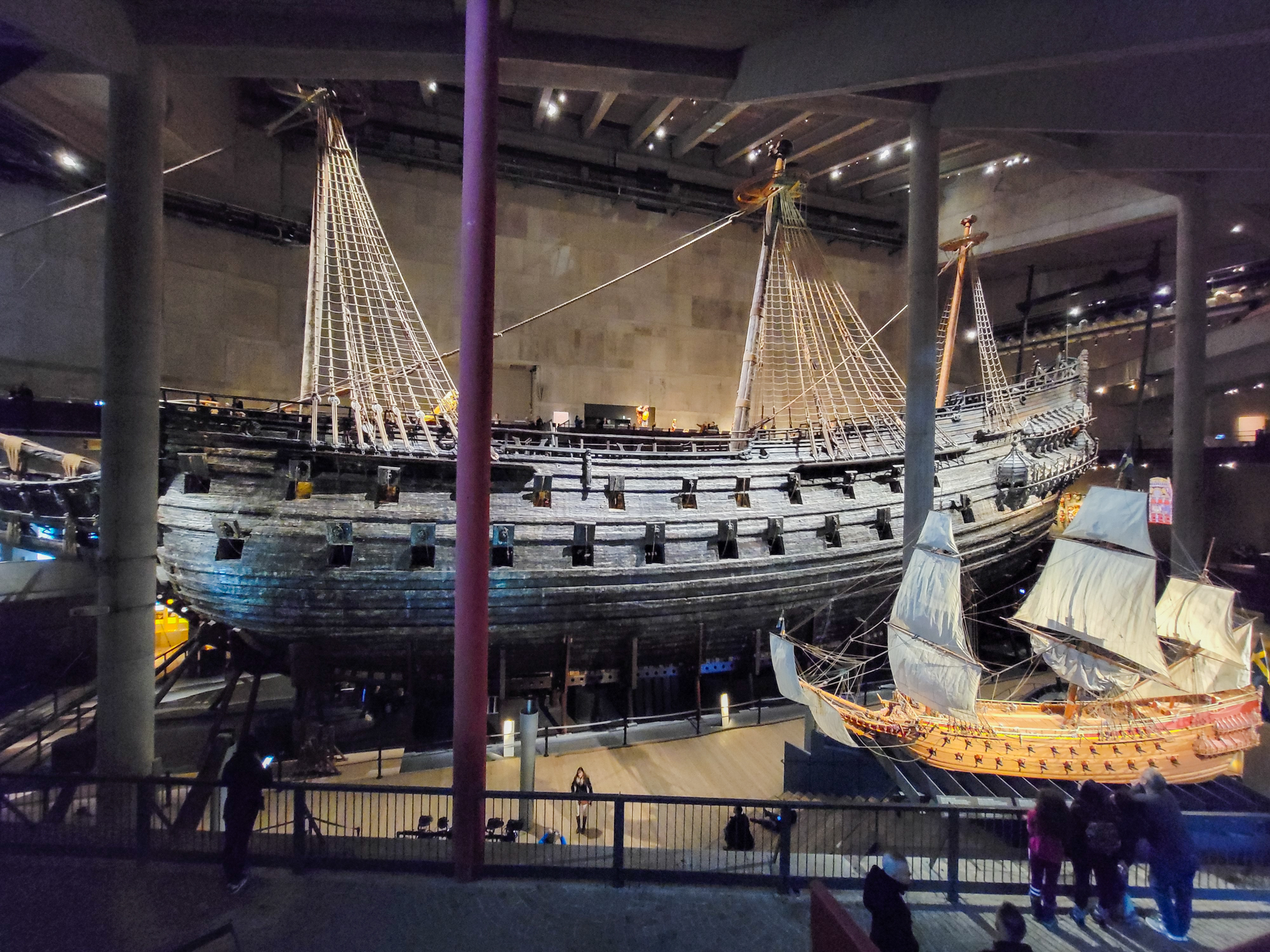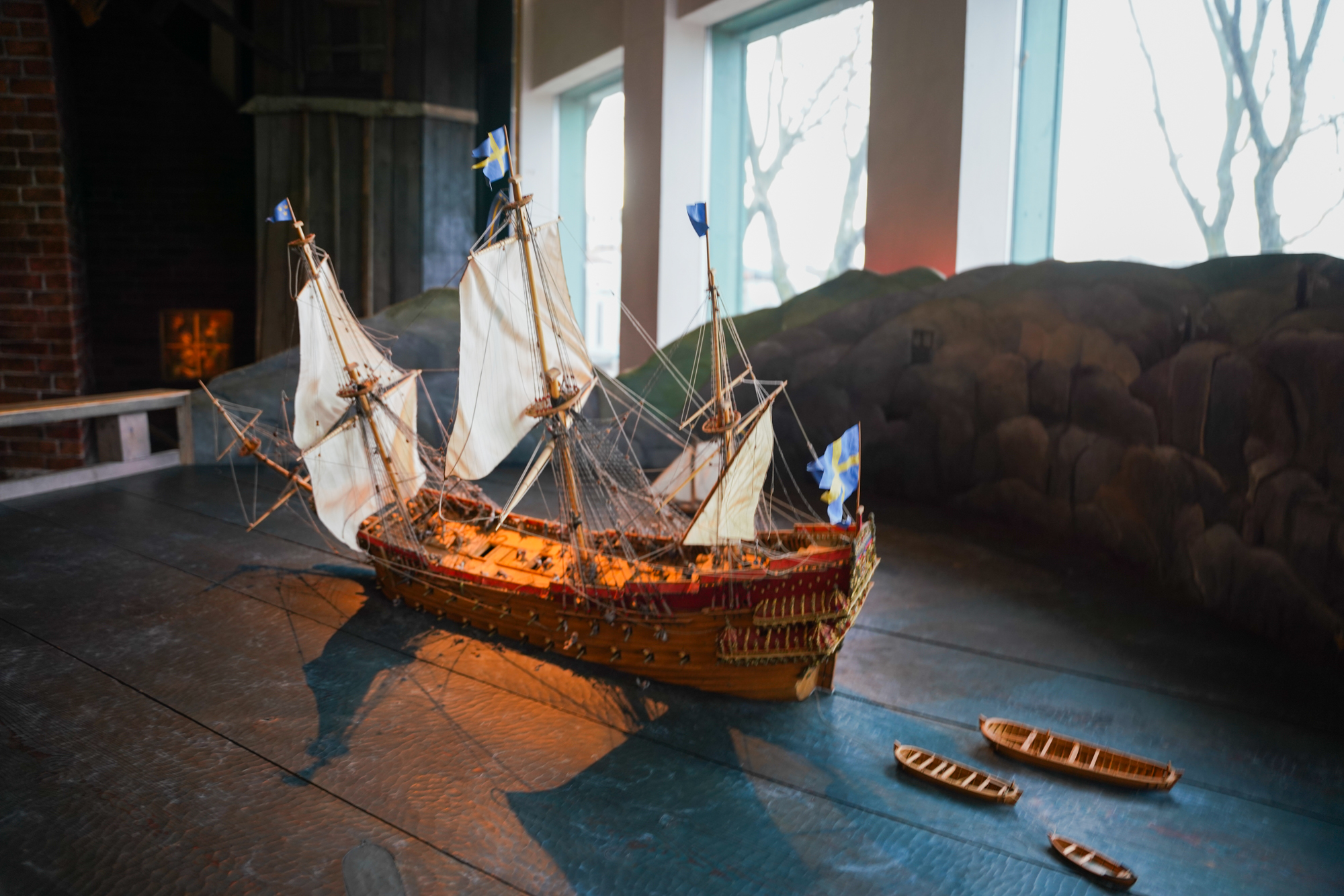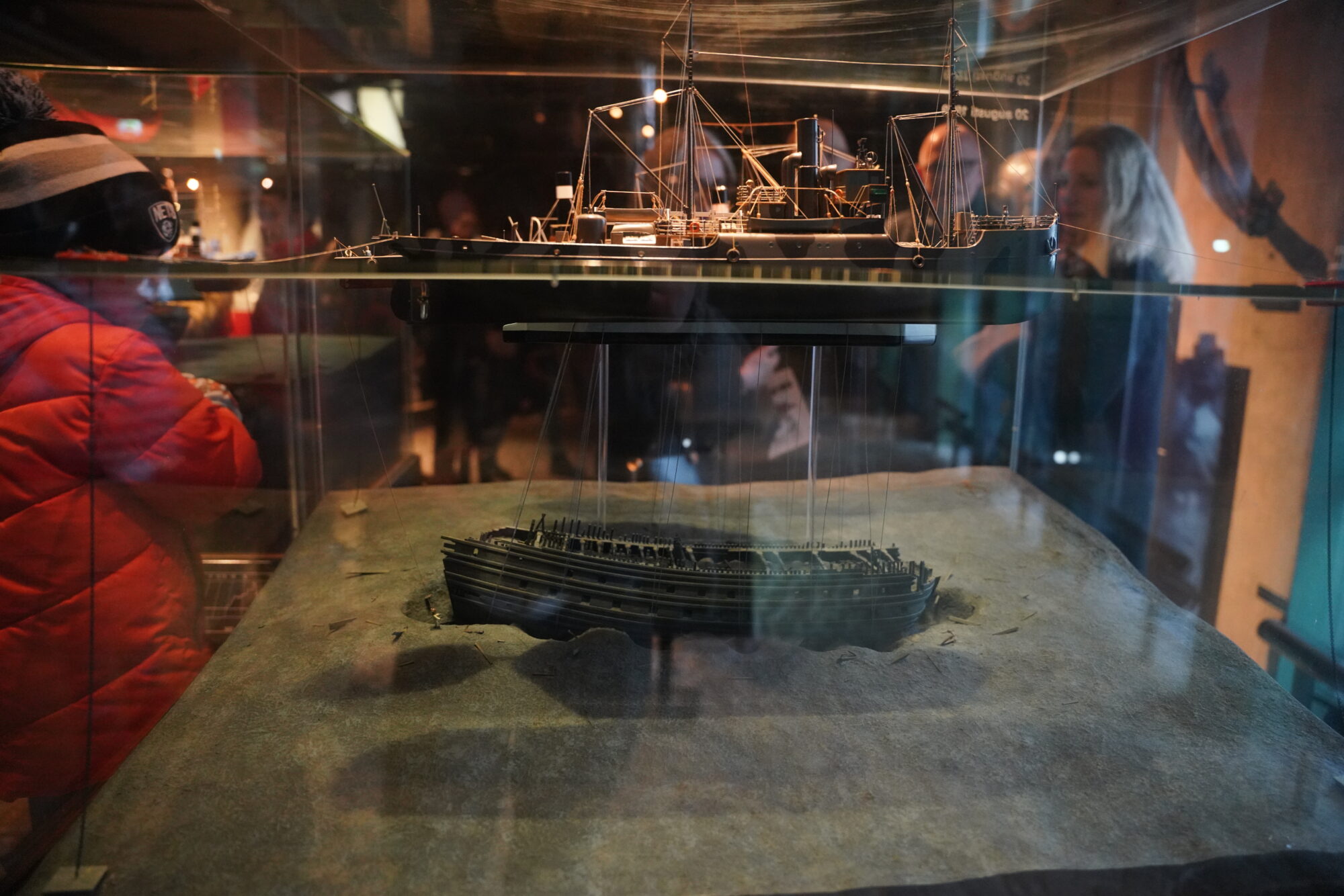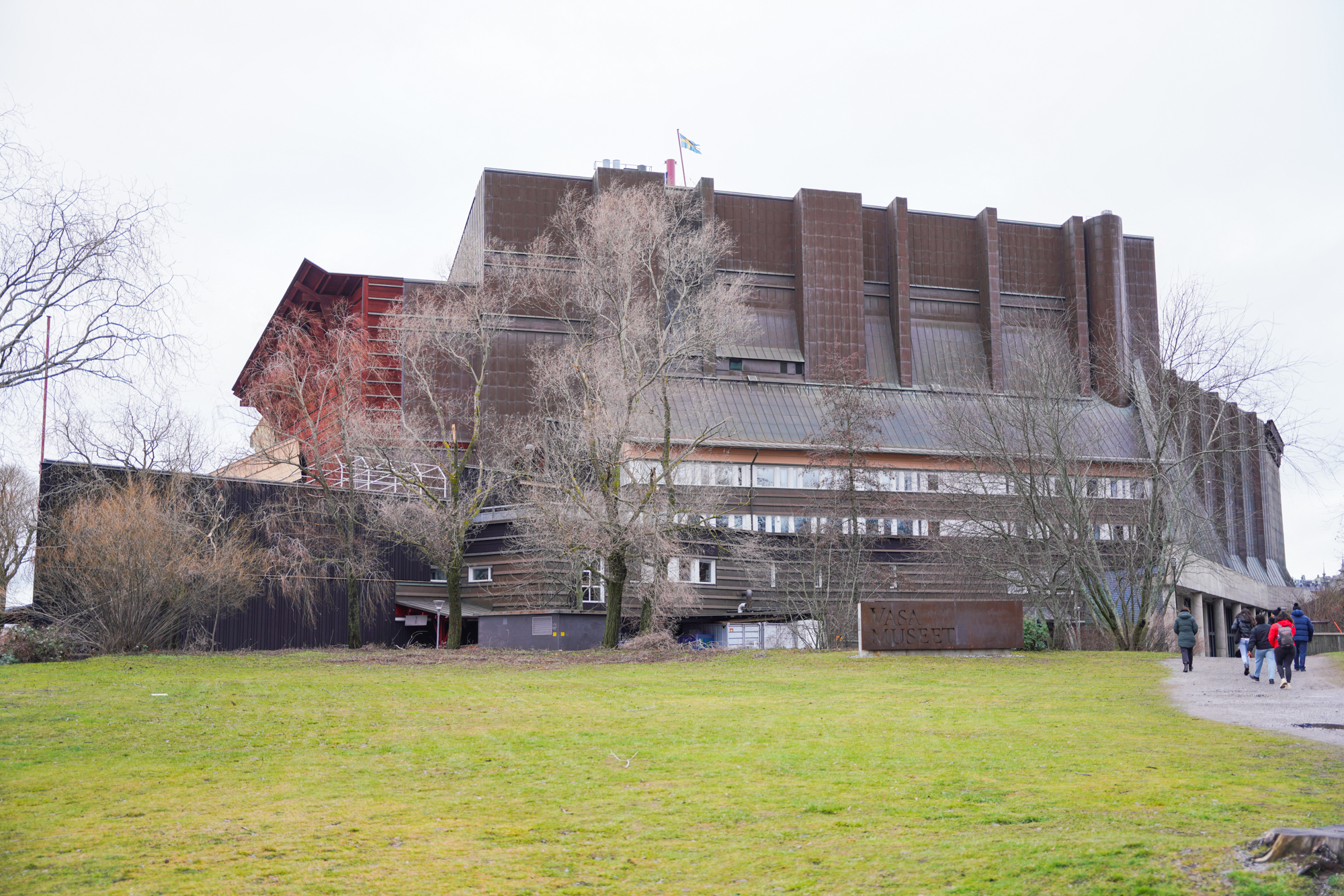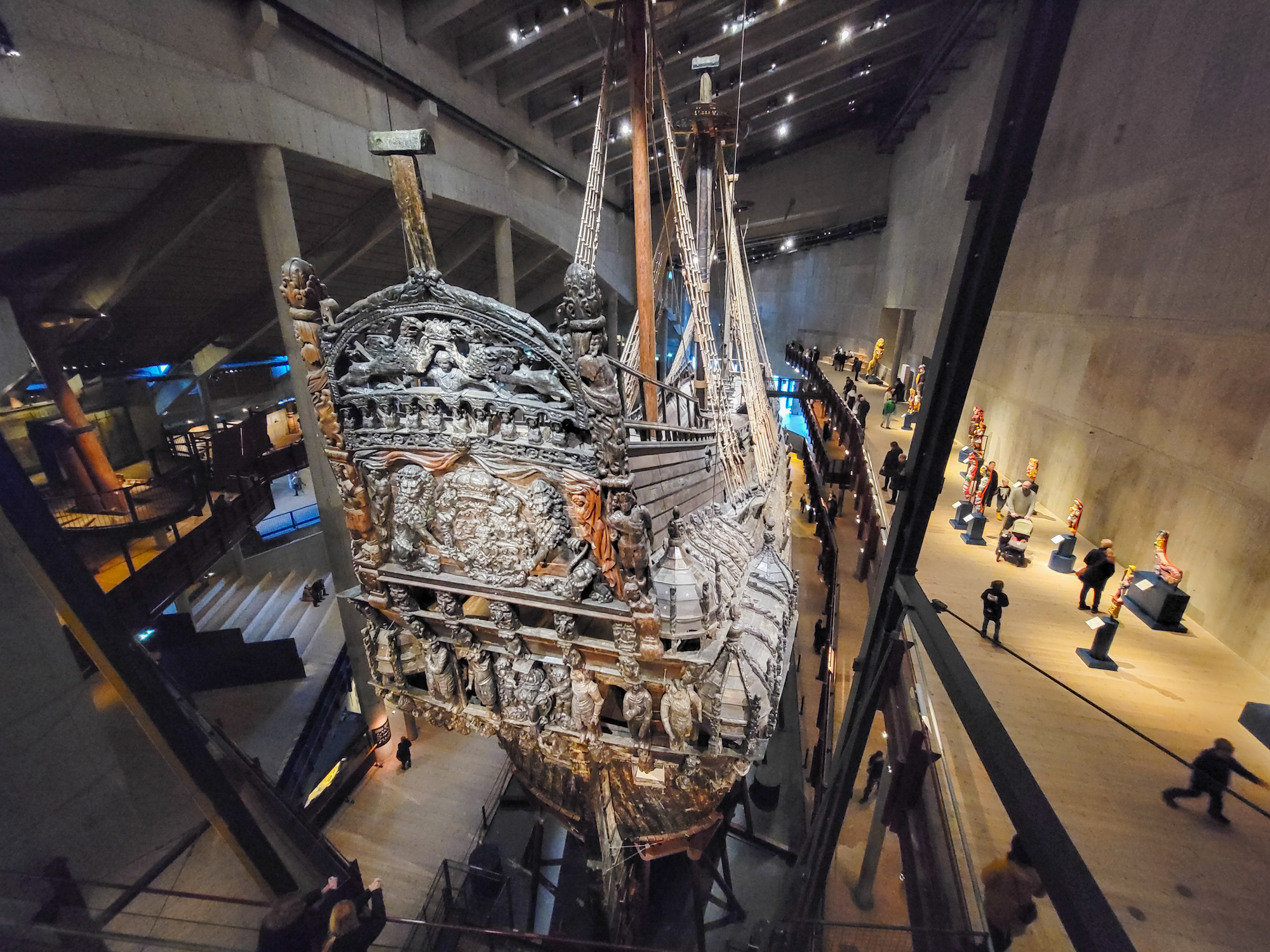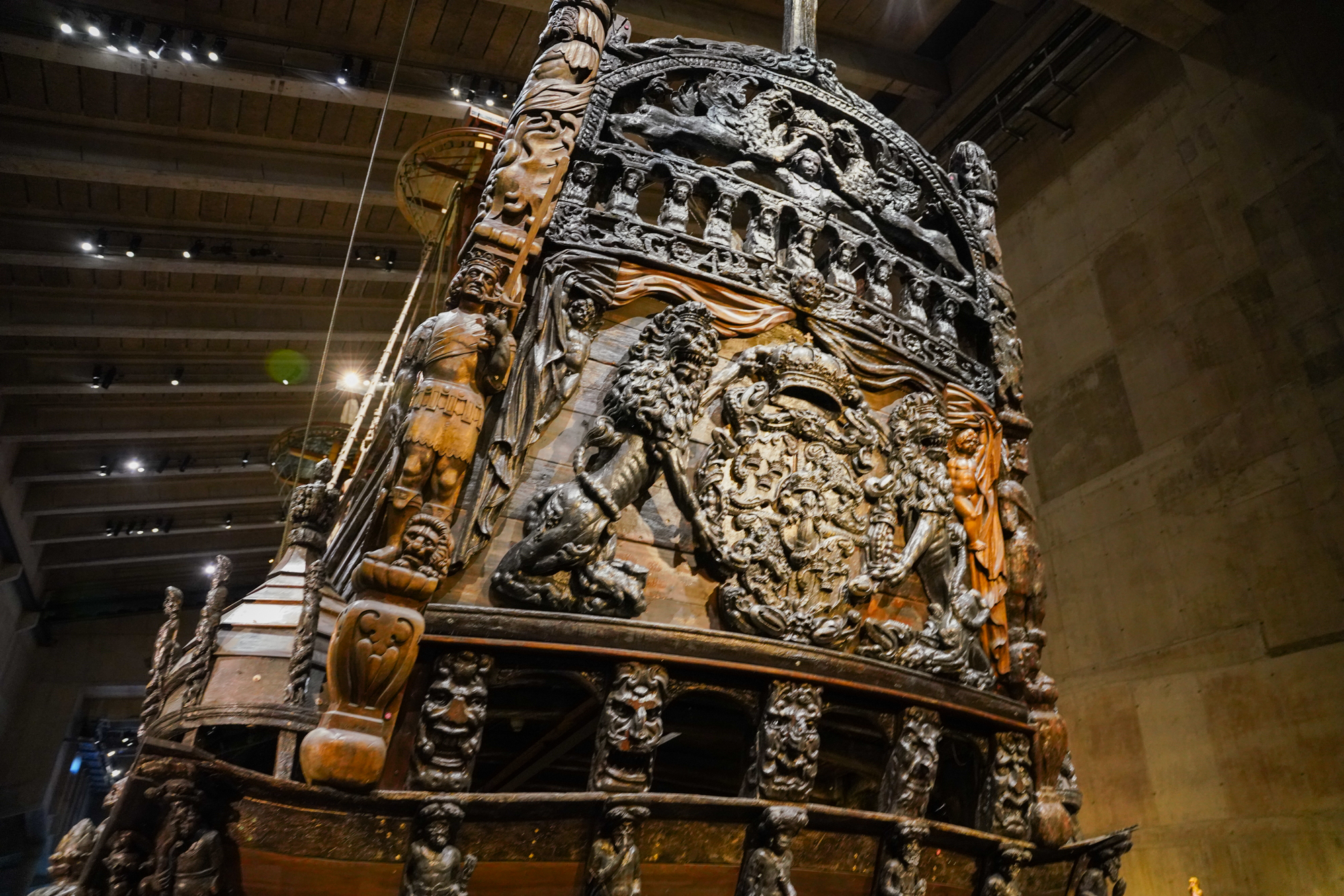Published by Jeremy. Last Updated on March 1, 2023.
Disclaimers: Our site uses demographic data, email opt-ins, display advertising, and affiliate links. Please check out our Terms and Conditions for more information. Listed prices and attraction details may have changed since our visit and initial publication.
When we told friends we would be visiting Stockholm, one recommendation came up time and time again- go to the Vasa Museum.
In fact, many of those recommendations were followed up with the claim that “it is the coolest museum I’ve ever seen.” The claim seemed a bit surprising as these were coming from fellow travel bloggers who have seen their fair share of epic museums and attractions. A museum dedicated to a shipwreck is one of the best museums on the planet? We were interested.
After visiting, we can safely say they were right.
To put it bluntly, the museum dedicated to the Vasa shipwreck is not only one of the finest museums we have visited but also one of the most fascinating stories of naval history the world has ever seen.
You must visit this one when in Stockholm.
History of the Vasa Shipwreck
In the 1600s, Swedish King Gustav II Adolf grew the country’s prominence throughout Europe through military conquest and advancement (particularly during the Thirty Years’ War). In 1625, he hired a famed master shipwright to build new warships for the fleet, with the Vasa aimed at being the flagship.
Shortly after construction began, the famed designer fell ill and ultimately passed away, leaving the construction of the masterpiece to an assistant. By 1628 the ship was finished; however, initial tests suggested that the ship was rolling more than it should. As they were under orders to get the ship out as quickly as possible, the ship set sail on August 10th, 1628, and promptly started rolling and taking on water just over a kilometer from shore.
The ship sank within minutes, with many aboard perishing while trying to save the ship.
In the years that followed, makeshift divers salvaged the cannons from the harbor, but the ship lay in ruin. It wasn’t until 1956, when Anders Franzen struck wood in Stockholm harbor, that the investigation into the ship’s origins began. Two years later, a cannon was discovered. In 1959, the Vasa started to be excavated out of its watery depths, raised in many stages, until on April 24th, 1961, the Vasa rose above the water 333 years after its ill-fated launch.
In the following years, the conservation effort began to preserve one of the most historically significant shipwrecks the world has ever seen. It was first displayed in the harbor and ultimately moved to the specially designed museum in 1990.
Today, visitors can explore the history of the Vasa Museum and see the ship that is said to be upwards of 98% original. Yes, that is how well preserved it is- particularly in part due to the unique blend of the brackish water of Stockholm harbor that helped preserve the ship for three centuries, but also due to the painstaking efforts of all the scientists and conservationists involved after the ship was raised, too!
What You Can See at the Vasa Museum
The experience for the Vasa Museum is set before you even walk inside. The monster building that houses the Vasa gives off an ambiance that puts the mind to seafaring and, in all honesty, was significantly larger than I would have anticipated when thinking of a 17th-century shipwreck.
The first scene you see when you enter is the ship’s bow, and the feeling of scale truly hits home- the Vasa is huge!
- For those who know naval dimensions better than we do, the Vasa has a sparred length of 69 meters (226 feet), 47.5m (156 feet) between perpendiculars, 11.7m beam (38 feet), 52.5m height (172 feet), 4.8m draft (16 feet), and nearly 14,000 square feet of sails- several of which are preserved and on display!
The museum is set up in a unique format where the Vasa can be found in the center, with multiple floors wrapped around three of the ship’s sides. Whether you are reading about the ship’s early history, sinking, life on board, warfare in 17th-century Sweden, genetic analysis of those who died on board, and the vast preservation efforts, views of the Vasa are never too far away.
The multiple levels of the museum are of particular note because this allows you to witness almost every angle possible of the ship from mere feet away. From the bottom looking up? You get a stellar view from the first floor. Looking onto the deck from the top floor? That too. Up-close-and-personal views of the detailed woodwork on the sides and stern? The wrap-around floor plan allows for that, too.
In fact, you can see just about every element of the ship at this museum except for the interior. Due to the preservation efforts, guests cannot be physically inside the ship at any time. But as the museum is doing its best to preserve the shipwreck for as many generations as possible, with work being done to address humidity, heat, skin oils, and so many other issues, well, no one can fault them for keeping the interior blocked off here.
Ultimately, those who visit the Vasa Museum will leave with a comprehensive understanding of how the Vasa ship came to be made, its unfortunate sinking, rising from the harbor floor, and subsequent preservation to the point that you see it today. It is a truly special museum that showcases something you are not likely to find anywhere else and is the kind of museum we would visit every time we find ourselves in Stockholm without any further reason needed.
The Vasa Museum is simply that good.
The Vasa Museum is located at Galärvarvsvägen 14, 115 21 in Stockholm.
About Jeremy

About the Author: Jeremy is a full-time travel writer based in Pittsburgh and primary author of this site. He has been to 70+ countries on five continents and seeks out new food, adventure activities, and off-the-beaten-path experiences wherever he travels.
